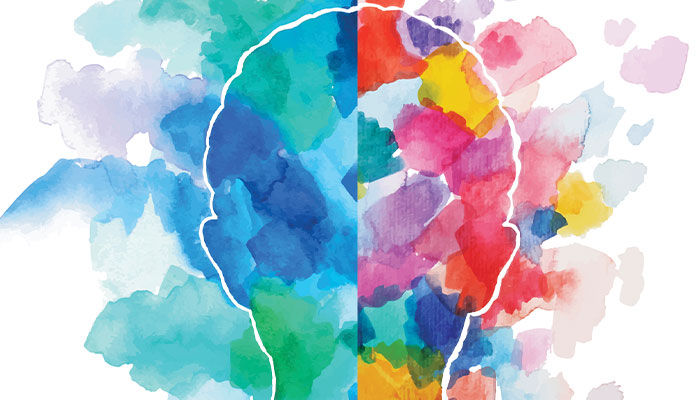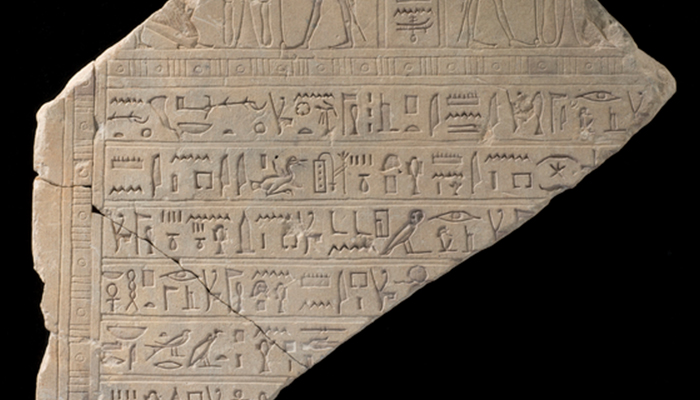Thanks to 3D imaging technology developed at Macquarie University, Australian historical artefacts that otherwise would rarely if ever be seen can now be closely inspected – and enjoyed – online.
Drink it up: Press play to load a 3D image of a convict cup dating from 1790, and see it from all perspectives by using your mouse or touch screen.
They range across archaeological treasures from the earliest years of the convict colony in NSW, to 20th century items that tell engaging stories about the social history of Parramatta in Sydney's greater west.
Among them is a convict cup made of Sydney clay, dating to just two years after the First Fleet arrived, and a 1920s hand-made watering can used by a well-known family of local market gardeners.
A convict-made Wellington jug scanned in all its 1820s glory is thought to have belonged to John Hodges, an emancipated convict-cum-sly grog trader, who built Parramatta's historic ‘Brislington’ – where the jug was found – using money he won in a card game.
Beyond bringing items into view, the technology allows people to see more of the object than they ever could in a museum.
“With any museum or institution, there are collections kept in boxes for years that are never seen, and we want to bring our heritage items that otherwise sit in storage to life, and make them accessible,” says Janelle Blucher, Research and Collection Services Coordinator at Parramatta City Council.
“Parramatta has a rich Indigenous history and behind Sydney is the second oldest colonial city in Australia.
“One of the key focuses for us is to celebrate and share our cultural heritage assets that assist us in telling our stories – and this project really does provide the ideal way for us to achieve this objective.”
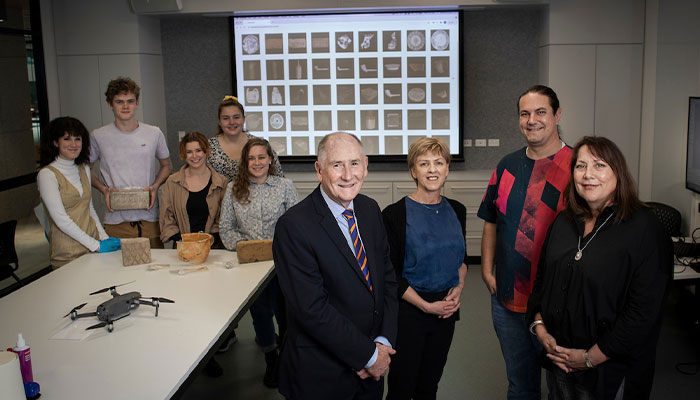
Image makers: Macquarie university students with artefacts they are scanning for Parramatta City Council (from left) Mylee Jones, Louis Anderson, Stephanie McFarlane, Amy Tanswell and Jasmin Wagner and (front from left) Cr Bob Dwyer, Lord Mayor of Parramatta; Janelle Blucher, Parramatta's Collection Services Co-ordinator; and from Macquarie's Faculty of Arts, Senior Learning Designer Michael Rampe and Executive Dean Professor Martina Mollering. Photo credit: Michael Amendolia
Michael Rampe, Senior Learning Designer in Macquarie’s Faculty of Arts, points out that beyond bringing items into view, the technology allows people to see more of the object than they ever could in a museum, where visitors are typically not permitted to touch objects let alone inspect them.
In contrast, the 3D digitising technology means users can look closely at the object from every perspective, manoeuvring it to magnify it, see inside it, to spin it around, and even to turn it upside down.
The COVID-19 pandemic has underscored the value of being able to access artefacts online, Rampe says. Academics, students, historians and interested members of the public are among those who are expected to take advantage of Parramatta Council’s expanding 3D collection of heritage items.
Students in the vanguard
Macquarie University students have been digitising the objects on 13-week PACE (Professional and Community Engagement) internships under the direction of Michael Rampe, a pioneer in 3D digitising technology.
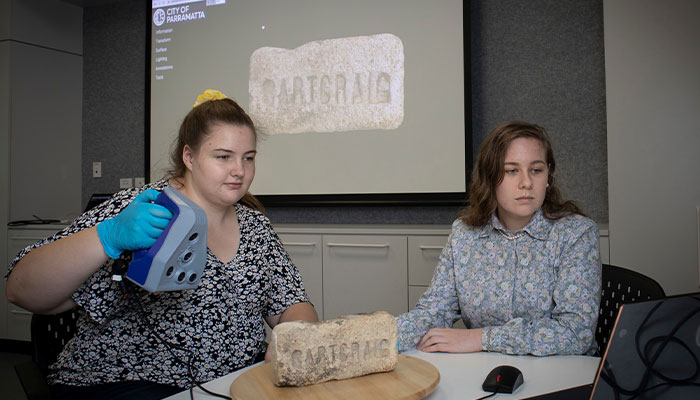
Real-world work: Students Amy Tanswell and Jasmin Wagner use a structured light scanner to 3D scan an artefact. Photo credit: Michael Amendolia
“We have been doing 3D imaging across the university for a few years, and the clients have been in archaeology, anatomy and biology and in our university museums,” Rampe says.
“What we trialled last session and are implementing in 2021 is a simulated scanning company, where our students are now ‘employees’ and the company can take on broader clients.
It very much goes beyond a technical skill and is actually a craft that has to be learned and honed and developed.
“We approached Parramatta Council with that as the pitch: they would become a simulated client but at no cost to them, so they get the benefit of having items scanned, and our students get the benefit of working with a real client, which is proving to be very successful because it is purposeful.”
In scanning the objects, the students use 3D imaging devices known as structured light scanners, and also take hundreds of photos with stills cameras in high-end photography studio conditions at Macquarie University.
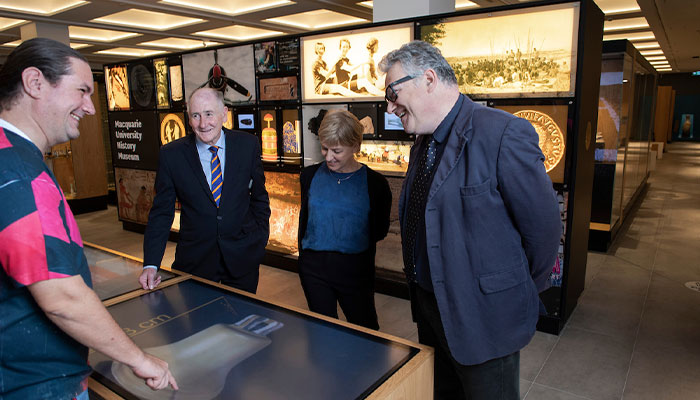
Cutting edge: Michael Rampe, Cr Bob Dwyer, Janelle Blucher and Professor Martin Bommas, Director of the Macquarie University History Museum, where the Parramatta items are scanned. Photo credit: Michael Amendolia
“At our end it is for our students – over the next 5 or 10 years this technology is going to be normalised within museums and other institutions and we are trying to empower our students to be there when it happens, to have the skills to then lead that industry,” Rampe says.
“We have been pioneering different approaches to scanning; it isn’t just a push-button, cookie cutter process – it very much goes beyond a technical skill and is actually a craft that has to be learned and honed and developed.
“There is critical thinking involved because every object is different – some, like a convict brick, you could scan in an hour, while others might take a few days.”
Enriching communities together
One of the more time-consuming items – and one of Rampe’s favourites – is the ship’s bell gifted by the people of Parramatta to the Parramatta III, a naval frigate commissioned in 1961 that saw active service in Vietnam.
Ring of history: Press play to load a 3D image of the Parramatta III ship's bell, and see it from all perspectives by using your mouse or touch screen.
The bell was used as a baptismal font for crew members’ babies, and their names were inscribed on the inside of the bell.
“If you actually look at that scan it comes up wonderfully, you can read all the names – so digitising it becomes an important way to document and then to communicate that heritage,” Rampe says.
- Climate change: Cattle burp issue on the rise
- End of COVID-19 help is likely to make more families homeless: new study
City of Parramatta Lord Mayor Cr Bob Dwyer says the project is a great example of how Council and the university sector can work together to create opportunities to learn, share and enrich the community.
“City of Parramatta Council is proud to partner with Macquarie University to bring Parramatta’s rich history to the world, and also to create new opportunities to innovate, share knowledge and provide invaluable training,” he says.
“Parramatta is one of the most fascinating places in Australia to discover the many stories that have shaped our nation. Now people from all over the world can discover this rich history online.”
Michael Rampe is Senior Learning Designer in the Faculty of Arts, and developed the Pedestal 3D publishing platform.
See the 3D display of Parramatta artefacts here.

